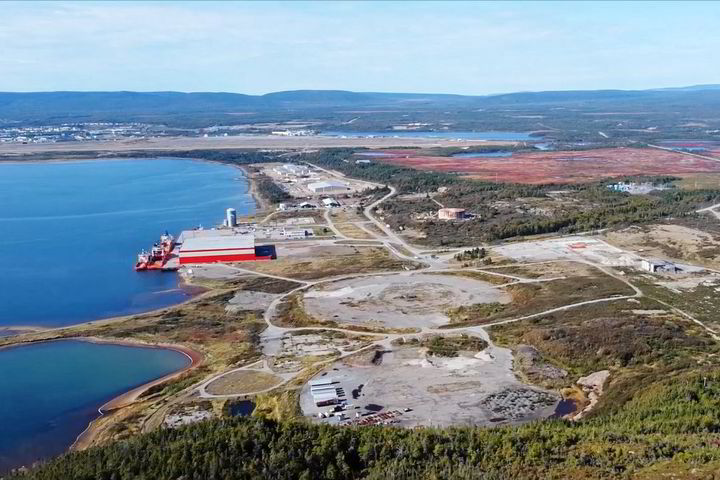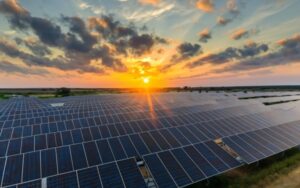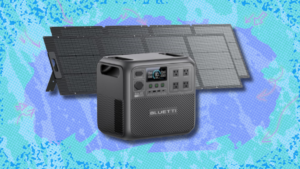Canadian government to lend $95m to giga-scale green hydrogen project mired in permitting queries

A 1.2GW green hydrogen project in Newfoundland, eastern Canada, is set to receive a C$128m ($95m) loan from the federal government to support its development ahead of a final investment decision (FID).
Project Nujio’qonik, under development in the town of Stephenville by a unit of US biofuels producer World Energy, is currently mired in permitting difficulties as regulators question a range of aspects of the proposal, including its power and water requirements.
The federal government loan will be put towards further development work, according to one of Project Nujio’qonik’s equity investors.
“Thanks to this commitment from the federal government, we expect our project to move more quickly into the next phase, such as FEED [front-end engineering and design] execution and long-lead item orders, which will be of great help in achieving our goal of being the first commercial green hydrogen [and] ammonia producer in Canada,” said Kyung-il Park, president and CEO of SK ecoplant, subsidiary of Korean conglomerate SK and 20% equity stakeholder in the project.
If all phases of the scheme are realised, Project Nujio’qonik will produce around 210,000 tonnes of green hydrogen per year, to make 1.2 million tonnes of green ammonia for export.
The first phase is expected to yield 400,000 tonnes of green ammonia, all of which will be EU-compliant, the developers say.
Article continues below the advert
“Charting and navigating new waters is never an easy undertaking, but our colleagues at EDC [Export Development Canada], and all levels of the federal and NL [Newfoundland and Labrador] provincial governments, have collaborated with us tirelessly to help make this inaugural agreement a defining moment for Canada and the province of Newfoundland and Labrador,” said Richard Hugh, chief financial officer of World Energy GH2.
FID on Project Nujio’qonik, heralded as a key component of Canada’s green ammonia export ambitions during the launch of the Canada-Germany Hydrogen Alliance in 2022, had been slated for October or November 2023.
But in October, the provincial government found that the project’s environmental impact statement (EIS) was “deficient”, as regulators argued that there was insufficient detail on a range of environmental questions, including the project’s proposed water use and monitoring — and its use of grid electricity.
Project Nujio’qonik, which subsequently re-submitted its EIS in January 2024, plans to build and operate two massive onshore wind farms of 1GW each to power its proton exchange membrane (PEM) electrolysers — however the plan has two major drawbacks.
The first, temporary, problem is that the first 1GW of wind capacity (from the Port au Port wind farm) intended to power the first 600MW phase of electrolyser capacity will not be commissioned by the time the hydrogen and ammonia production plant is scheduled to come on-stream.
First hydrogen is due to be produced in Q4 2025, World Energy GH2 said in its original EIS, while the Port au Port will not be commissioned until Q1 2026 — a gap which could be as little as a few weeks, or as much as six months.
The second, longer-term problem, is that the project needs round-the-clock power supply to support ammonia and hydrogen production, and World Energy GH2 anticipates lower load factors on the wind farm during the summer.
To plug these gaps, World Energy GH2 has applied to source electricity from Newfoundland and Labrador’s grid — which has a power mix of 96% hydropower — to supplement the 50MW of biodiesel auxiliary back-up power it has planned for the site.
The company has applied to local state-owned producer NL Hydro for 10MW of firm power supply, and a further 146MW of non-firm supply.
But regulators are concerned that the local grid may not be able to cope with the addition of a major power user.
However, World Energy GH2 and NL Hydro have since instigated an electricity system impact study (SIS), in which the developer stresses that it would only use grid power at times capacity is available, as defined by NL Hydro.
Hydrogen Insight asked World Energy GH2 about its plans for back-up in the event that it could not secure necessary grid power, but the company referred back to the SIS, which is currently ongoing.
A decision on the amended EIS is due in April 2024, while the SIS is expected to take around six months from the point at which World Energy GH2 supplies the necessary documents, which it was scheduled to do in January 2024.




